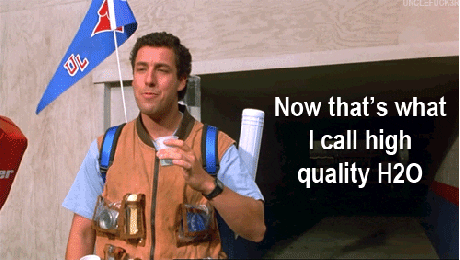First off...let me say I understand that in order to make a "true" lager you must use lager yeast etc etc.
What I would like to do is make a beer that approaches the general flavor profile of the Pilsner Urquel type beers....as close as possible... with the equipment, ingredients, and environment boundaries I have to work within.
I would appreciate any input you might have re yeast selection.
Of course if you see any easy improvements to the recipe or process please let me know
This first beer (recipe below) turned out very good but sweet. I know the Kolsch yeast is not the ideal, but it was a good starting point. I am not sure whether the sweetness I am detecting is a function of the yeast or maybe a just the pilsner malt flavor itself.
The bitterness is a little low.
I have ordered some German Magnum hops that I will use for some of the bittering IBUs in the next iteration....and will up it a bit. The Saaz hops are 2021 harvest.... have been kept vacuum sealed and in the freezer, but maybe they have oxidized a bit.
I don't have any personal experience with the lager yeast at warmer temps so I have no idea what the results would be if I pushed the temperatures.
Really interested to hear yeast suggestions given my fermentation temperature constraints.
Thanks!
Equip/Environment::
eBIAB using a Digiboil 65L.
Decoction mashing is out.
Ferment in 6.5 gallon Big Mouth Bubblers (not interested in setting the nozzles in ice water)
Fermentation is in an open garage with temperature this time of year 66-69F
Bottle conditioning/Bottling - no room for kegging.
GM Pseudo Pilsen/Kolsch(6.35 gallon )WIP2
TYPE: All Grain eBIAB
Recipe Specifications
--------------------------
Boil Size: 8.49 gal
Post Boil Volume: 7.14 gal
Batch Size (fermenter): 6.35 gal
Bottling Volume: 6.10 gal
OG: 1.056 SG
FG: 1.009 SG
Estimated Color: 4.0 SRM
Estimated IBU: 41.2 IBUs
Boil Time: 90 Minutes
Ingredients:
------------
Water Starting with RO - Did not adjust pH as no Acid available at time of this brew (will correct in future)
Calcium: 49.8
Sodium: 0.0
Chloride: 53.7
Magnesium: 8.2
Sulphate: 79.1
Bicarbonate: 0.0
4.00 g Calcium Chloride (Mash)
3.00 g Epsom Salt (MgSO4) (Mash)
3.00 g Gypsum (Calcium Sulfate) (Mash)
10 lbs Pilsen Malt (Briess) (1.2 SRM) - 72.7 %
3 lbs 8.0 oz Goldpils Vienna Malt (Briess) (3.5 SRM) - 25.5 %
4.0 oz Munich 20L (Briess) (20.0 SRM) - 1.8 %
Total Grain Weight: 13 lbs 12.0 oz
70.00 g Saaz US 2021 [4.00 %] - Boil 90.0 min - 31.0 IBUs -
25.00 g Saaz US 2021 [4.00 %] - Boil 30.0 min - 8.0 IBUs -
15.00 g Saaz US 2021 [4.00 %] - Boil 10.0 min - 2.3 IBUs -
1.0 pkg Kölm Kölsch Style Ale Yeast (Lallemand #- )
Mash Schedule: 10 eBIAB - Medium/Full Body (154F) 60 Min
What I would like to do is make a beer that approaches the general flavor profile of the Pilsner Urquel type beers....as close as possible... with the equipment, ingredients, and environment boundaries I have to work within.
I would appreciate any input you might have re yeast selection.
Of course if you see any easy improvements to the recipe or process please let me know
This first beer (recipe below) turned out very good but sweet. I know the Kolsch yeast is not the ideal, but it was a good starting point. I am not sure whether the sweetness I am detecting is a function of the yeast or maybe a just the pilsner malt flavor itself.
The bitterness is a little low.
I have ordered some German Magnum hops that I will use for some of the bittering IBUs in the next iteration....and will up it a bit. The Saaz hops are 2021 harvest.... have been kept vacuum sealed and in the freezer, but maybe they have oxidized a bit.
I don't have any personal experience with the lager yeast at warmer temps so I have no idea what the results would be if I pushed the temperatures.
Really interested to hear yeast suggestions given my fermentation temperature constraints.
Thanks!
Equip/Environment::
eBIAB using a Digiboil 65L.
Decoction mashing is out.
Ferment in 6.5 gallon Big Mouth Bubblers (not interested in setting the nozzles in ice water)
Fermentation is in an open garage with temperature this time of year 66-69F
Bottle conditioning/Bottling - no room for kegging.
GM Pseudo Pilsen/Kolsch(6.35 gallon )WIP2
TYPE: All Grain eBIAB
Recipe Specifications
--------------------------
Boil Size: 8.49 gal
Post Boil Volume: 7.14 gal
Batch Size (fermenter): 6.35 gal
Bottling Volume: 6.10 gal
OG: 1.056 SG
FG: 1.009 SG
Estimated Color: 4.0 SRM
Estimated IBU: 41.2 IBUs
Boil Time: 90 Minutes
Ingredients:
------------
Water Starting with RO - Did not adjust pH as no Acid available at time of this brew (will correct in future)
Calcium: 49.8
Sodium: 0.0
Chloride: 53.7
Magnesium: 8.2
Sulphate: 79.1
Bicarbonate: 0.0
4.00 g Calcium Chloride (Mash)
3.00 g Epsom Salt (MgSO4) (Mash)
3.00 g Gypsum (Calcium Sulfate) (Mash)
10 lbs Pilsen Malt (Briess) (1.2 SRM) - 72.7 %
3 lbs 8.0 oz Goldpils Vienna Malt (Briess) (3.5 SRM) - 25.5 %
4.0 oz Munich 20L (Briess) (20.0 SRM) - 1.8 %
Total Grain Weight: 13 lbs 12.0 oz
70.00 g Saaz US 2021 [4.00 %] - Boil 90.0 min - 31.0 IBUs -
25.00 g Saaz US 2021 [4.00 %] - Boil 30.0 min - 8.0 IBUs -
15.00 g Saaz US 2021 [4.00 %] - Boil 10.0 min - 2.3 IBUs -
1.0 pkg Kölm Kölsch Style Ale Yeast (Lallemand #- )
Mash Schedule: 10 eBIAB - Medium/Full Body (154F) 60 Min




















![Craft A Brew - Safale BE-256 Yeast - Fermentis - Belgian Ale Dry Yeast - For Belgian & Strong Ales - Ingredients for Home Brewing - Beer Making Supplies - [3 Pack]](https://m.media-amazon.com/images/I/51bcKEwQmWL._SL500_.jpg)






































